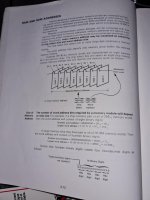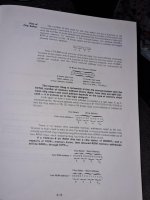oscilloscope
New Member
hi
I'm new to the form , what have i been up too! well in my spare time , i am trying to learn the 6502 assembly of things and other items ! , i have been on a mass buy up of 6502 books assembly language books i have collected devices such as c64 breadbin , and various VIC things. games the list goes on.
my main interest is to learn how to program in assembly. so i have a base of understanding of how chips in general work and what makes then tick! , but i am having great difficulty in reading some of the books i have purchased i would either get stuck on a page and find no real answers which make sense , the book i have started reading again is the "an introduction to microcomputers" , the book is very dated compared to todays computers and hardware. but this is one of the reasons i bought it. , now i did read the first book of this series of books , which again very difficult to read and i realised quite quickly that i know very little about how a computer does what it is , it also doesn't help when i read in general i over think the information and believe it to be harder then it really is it is a very big burden i carry , not to mention my maths skills & English skills are awful.. but fear not i am learning.
so back to the book an introduction to microcomputers"
i have come to page 3-12 to 3-13
these pages are explaining about " RAM and ROM addressing & memory size & chip select"
i have read this pages alot! its making me dizzy just thinking about it, so the pages start explaining that each RAM chip holds 256(10) memory WORDS , then it leads to another exsplaintions regarding the largest amount of a memory chip which is about 16k i do believe , ( yes this book is old!) , then follows on , with a 2 hex digits of 00 , then follows on about chip select!
right ok , this is where i am getting rather stuck , i have read this over and over and over , so am i correct in thinking this , the arbitrary information , what ever it might be , comes in and is ready to be stored in the ram , but its not stored in say RAM chip one , its spanned across say all 8 ram chips (in the example illustration ) , each piece of stored information has a chip select bit that selects the relevant chip with the correct piece of data. so it knows where it all is?
am i close?
I'm new to the form , what have i been up too! well in my spare time , i am trying to learn the 6502 assembly of things and other items ! , i have been on a mass buy up of 6502 books assembly language books i have collected devices such as c64 breadbin , and various VIC things. games the list goes on.
my main interest is to learn how to program in assembly. so i have a base of understanding of how chips in general work and what makes then tick! , but i am having great difficulty in reading some of the books i have purchased i would either get stuck on a page and find no real answers which make sense , the book i have started reading again is the "an introduction to microcomputers" , the book is very dated compared to todays computers and hardware. but this is one of the reasons i bought it. , now i did read the first book of this series of books , which again very difficult to read and i realised quite quickly that i know very little about how a computer does what it is , it also doesn't help when i read in general i over think the information and believe it to be harder then it really is it is a very big burden i carry , not to mention my maths skills & English skills are awful.. but fear not i am learning.
so back to the book an introduction to microcomputers"
i have come to page 3-12 to 3-13
these pages are explaining about " RAM and ROM addressing & memory size & chip select"
i have read this pages alot! its making me dizzy just thinking about it, so the pages start explaining that each RAM chip holds 256(10) memory WORDS , then it leads to another exsplaintions regarding the largest amount of a memory chip which is about 16k i do believe , ( yes this book is old!) , then follows on , with a 2 hex digits of 00 , then follows on about chip select!
right ok , this is where i am getting rather stuck , i have read this over and over and over , so am i correct in thinking this , the arbitrary information , what ever it might be , comes in and is ready to be stored in the ram , but its not stored in say RAM chip one , its spanned across say all 8 ram chips (in the example illustration ) , each piece of stored information has a chip select bit that selects the relevant chip with the correct piece of data. so it knows where it all is?
am i close?


